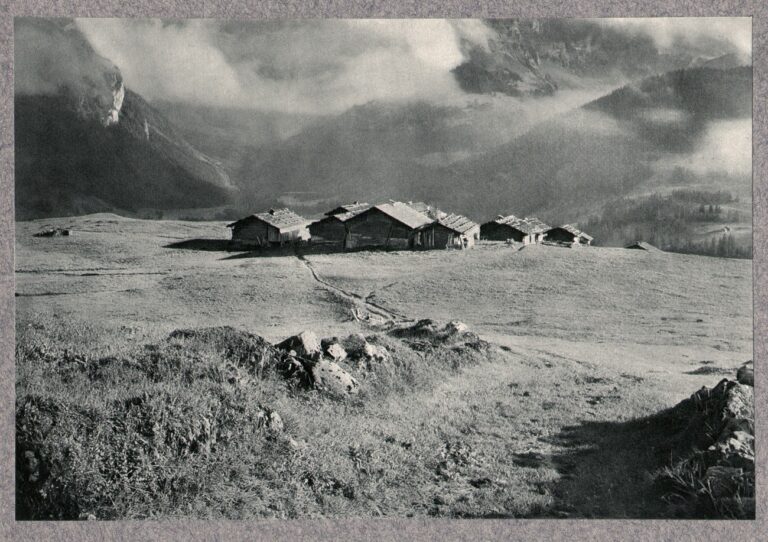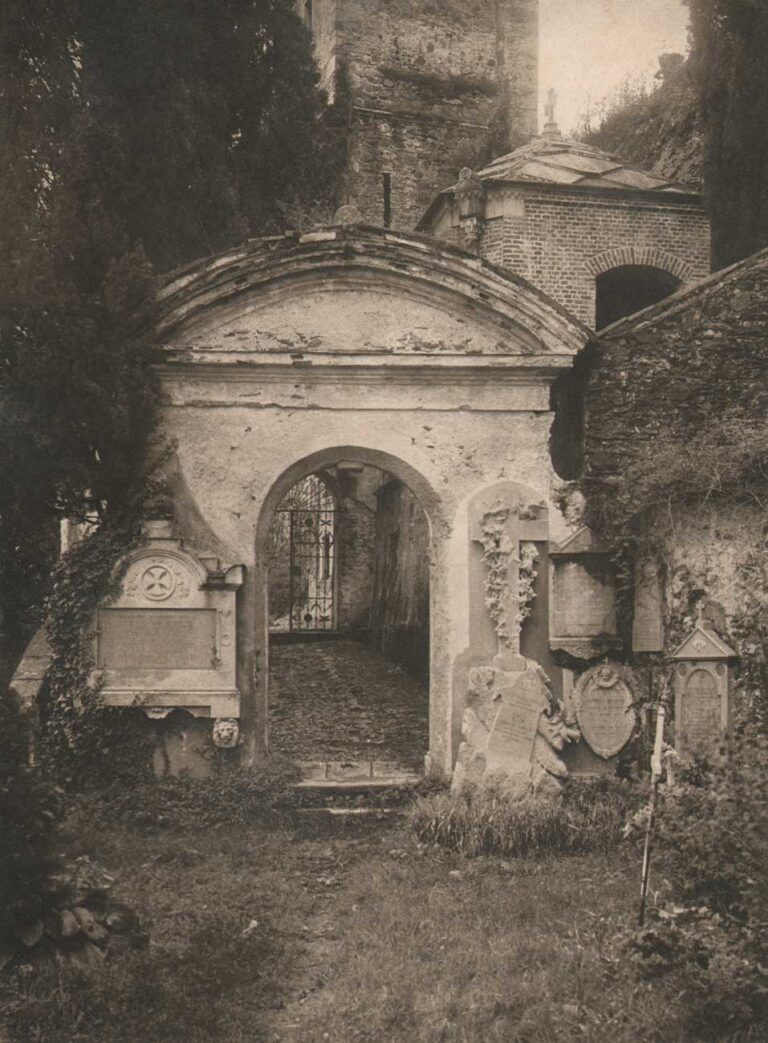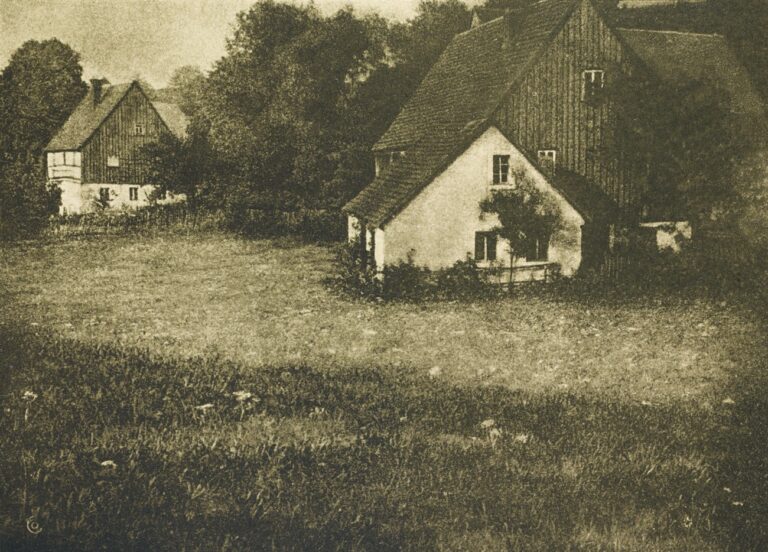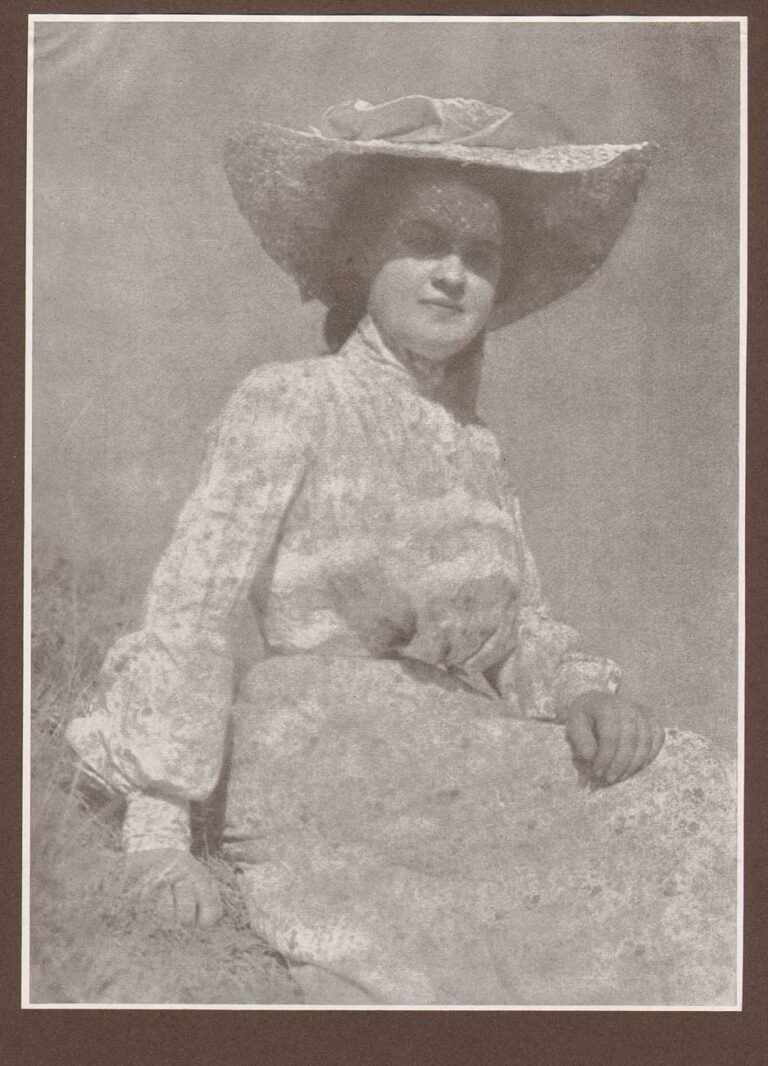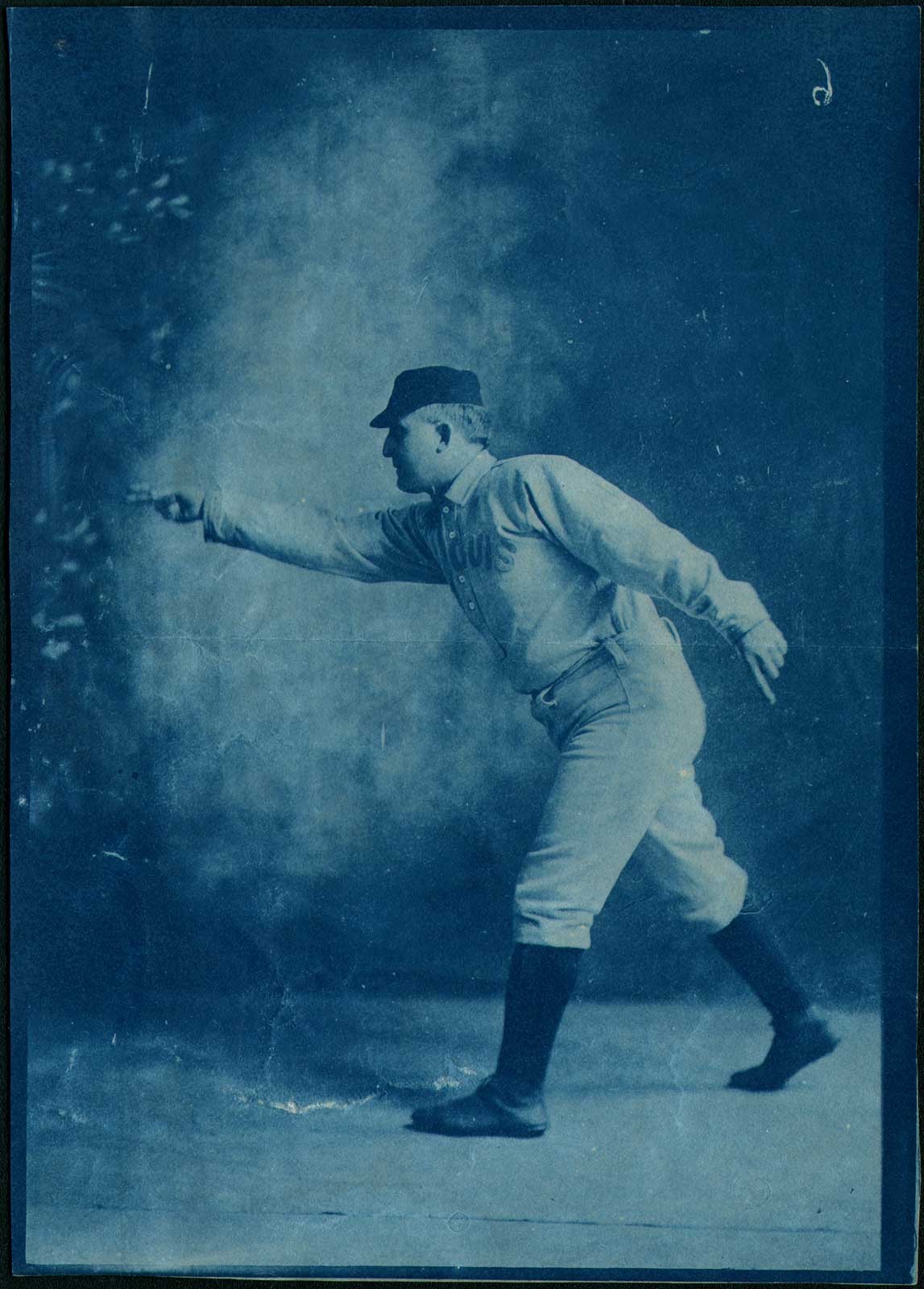
Ted Kennedy Throws a Curveball
From a series of cyanotypes taken ca. 1905 showing pitcher Ted Kennedy demonstrating how to throw a variety of pitches, this photograph is believed to have been a promotional item published by the former major leaguer. Here he is seen on his follow-through for the overhand curve ball pitch. Several variant examples from this series are held as part of the Kennedy Collection in the National Baseball Hall of Fame Library at Cooperstown, N.Y., with this example additionally bearing an autograph in graphite of the pitcher believed to be genuine. (see accompanying blog post showing signature)
Biography: American Major League Baseball pitcher Ted Kennedy: 1865-1907
Ted Kennedy was born in Henry County Illinois on February 7, 1865. Ted learned the carpenter’s trade from his father, but he soon shared the passion for baseball prevalent in Peoria. The city had one of the country’s top independent teams, and attracted notice with a 1-0 win over the Boston Red Stockings. Jack Rowe, Bill Gleason and Tom Loftus were among Peoria’s standouts, but the star of the team was pitcher Charles Radbourn. The thirteen-year-old Kennedy served as bat boy and water boy for that team. Kennedy later remembered Radbourn as being one of the first to master the overhand curve ball. In addition to his duties with the team, Kennedy was eager to learn the art of pitching. During his teenage years, Kennedy recalled himself as being “very light for a pitcher, as I was growing, being only able to pitch five or six innings. I was rated a good third corner and could stick some in those days. “
Kennedy’s first game was June 12, 1885 and his final game was September 23, 1886.
1885 Chicago White Stockings National League
1886 Philadelphia Athletics American Association
1886 Louisville Colonels American Association
On the mound, Kennedy dominated most competition. He later remembered striking out 277 batters in 18 starts, while Sporting Life in the November 12, 1884 issue credited him with accomplishing the feat in 17 games.
While playing with the Athletics, Kennedy missed significant time due to his shoulder injury. He returned briefly from the injury, but was left at home when the Athletics went on an extended road trip, and was soon released. Kennedy received an opportunity with Louisville, also of the American Association. Temporarily replacing Toad Ramsey, Kennedy made four starts between September 16 and 23, all losses. One loss was to his former team and the other three were against New York. He finished the season 5-19 with a 4.66 earned run average. His major league career was over.
After retiring as a player, Kennedy became a sporting goods manufacturer. He specialized in gloves and catcher’s mitts and initially based his factory in Chicago. In 1893, he even found time to serve for one game as a major league umpire, September 3, Chicago was hosting Baltimore.
Soon after, Kennedy sold his patents to the A.G. Spalding Company and returned to his hometown of Peoria. Kennedy later said “Here I experimented on new ideas of improved mitts, which I began manufacturing.” He also operated a baseball school, specializing in teaching young players how to throw the curve ball. He became a vegetarian and as his obituary later said “held that the training ideas of the baseball teams in the country were wrong. He had a theory he could take a team trained along his own ideas, with a meat diet absent and turn out a nine which would capture a championship.” Shortly after 1900, the Kennedy’s moved to St. Louis and Ted became a furrier in addition to operating his baseball school. He continued to be an innovator. The Peoria Star remembered that “he invented the use of a ball light in weight and so marked as to give the handling for the various curves and breaks in order to make the learning of the latter easier.”
He also invented an early pitching machine. The Washington Post reported that he was going to help manager Jimmy McAleer “make better batters” of the 1904 St. Louis Browns. The plan didn’t work. The Browns team batting average for 1904 declined from the 1903 figure. Though Kennedy had theories on how to improve the game, he also believed the old players were better. He said of deadball era pitchers: “Take the pitching of today and put old 1885 Chicago, Buffalo, and New York teams against it, and they would turn the infield into a hospital, and many of the games would have to be postponed and played the next day, as they would be unable to get the real old sluggers out.” Even the innovation of the spitball was nothing new to Kennedy. “What they call the spit ball has moss four feet thick on it. The old thumb drop ball has found a new name. Bobby Mathews the grandest little man of the box used it.”
Apparently the baseball and fur businesses were successful. By the summer of 1907, rumors were circulating that Kennedy was part of a group attempting to purchase the St. Louis Cardinals.
Unfortunately, none of that would come to pass. In late July 1907, Ted’s father died in St. Louis after a fall down an elevator shaft. Three months later, Ted Kennedy would be also be dead. The account in The Peoria Star said, “Kennedy’s death came as a surprise, as he retired Sunday night (October 27) apparently in the best of health. Members of Kennedy’s family were awakened at 3 o’clock Monday morning to find him in such serious condition that a physician was hurriedly called, but he died before the latter arrived.” The coroner’s inquest attributed death to fatty degeneration of the heart. Kennedy was buried on October 30 at St. Louis’ Calvary Cemetery. He was 42. (1.)
1. Biography: Ted Kennedy: from Finding Aid: Ted Kennedy Collection, BA MSS 76, National Baseball Hall of Fame Library, Cooperstown, NY. This abridged biography courtesy of an in-depth biography of Kennedy written by Craig Lammers for the Society for American Baseball Research. (SABR) You can find the entire biography here.
